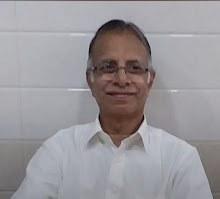Beginner's guide to solving cryptic crosswords
To celebrate publication of 25,000 Guardian cryptic crosswords, here are some handy tips to help you solve them
By Sandy Balfour
At first glance, cryptic crossword clues can appear daunting, but what no one ever tells you is this: the answer is right in front of you – by definition. Every crossword clue contains a definition of the answer you're looking for. All you have to do is find it . . .
1. Read the clue. Then read it backwards. Either the first word or the last word (or phrase, or even the whole clue) defines the solution. Work out what the solution means. For example: Former lover can court no more(7). Possible definitions? Former or former lover or more or no more.
2. Think about the rest of the clue. The part of the clue that is not the definition is known as the subsidiary indicator. The SI is there to help. It gives you another way to get the solution. This, in theory, makes it easier. In the clue above: former lover often means EX. Can sometimes means IS ABLE but can also be a TIN. Court may mean WOO but can also be shortened to CT, as in a street name.
3. Harden your heart against the setter's siren charms. The subsidiary indicator offers a route to the solution – but it also offers the setter the opportunity to lead you down the garden path. The clue here, on a surface reading, seems to be about lovers and courting and so on. It almost certainly isn't. It's probably about death or something.
4. Repeat step three. They really are cunning foxes, these setters. They have essentially two ways of messing with you. The first is by disguising the definition. It's still a definition, but it's cryptic. The second is by having fun with the surface reading of the subsidiary indicator. Try, for example, Puck's clue from a couple of weeks back: Maybe wearing some larger undies (6). The surface is clearly about people like you and me, those whose better days are behind us and who now shop at M&S. But what's the definition? Undies? Maybe? Maybe wearing?
5. Look at the number of letters. Ten-letter solutions are longer than five-letter solutions. I know it sounds obvious, but it should shape your thinking. A 10-word clue for a three-letter solution should alert you to something. So should a question mark at the end of a clue. A question mark means the setter is not quite playing by the rules.
6. Solve the damn thing . . . Yes, well, that's all very well (I hear you cry) – so let's return to the two clues . . .
Former lover can court no more (6):
Definition? No more. Made up of? Former lover = EX + can = TIN + court = CT = EXTINCT. Meaning, no more.
Maybe wearing some larger undies (7):
Definition: a type of word of which "wearing" (indicated by maybe) is an example. Oh, right, a GERUND. It's right there in front of us: some (meaning "part of") larGER UNDies.
Alternatively, you can turn do the Sudoku instead. But where's the fun in that?
